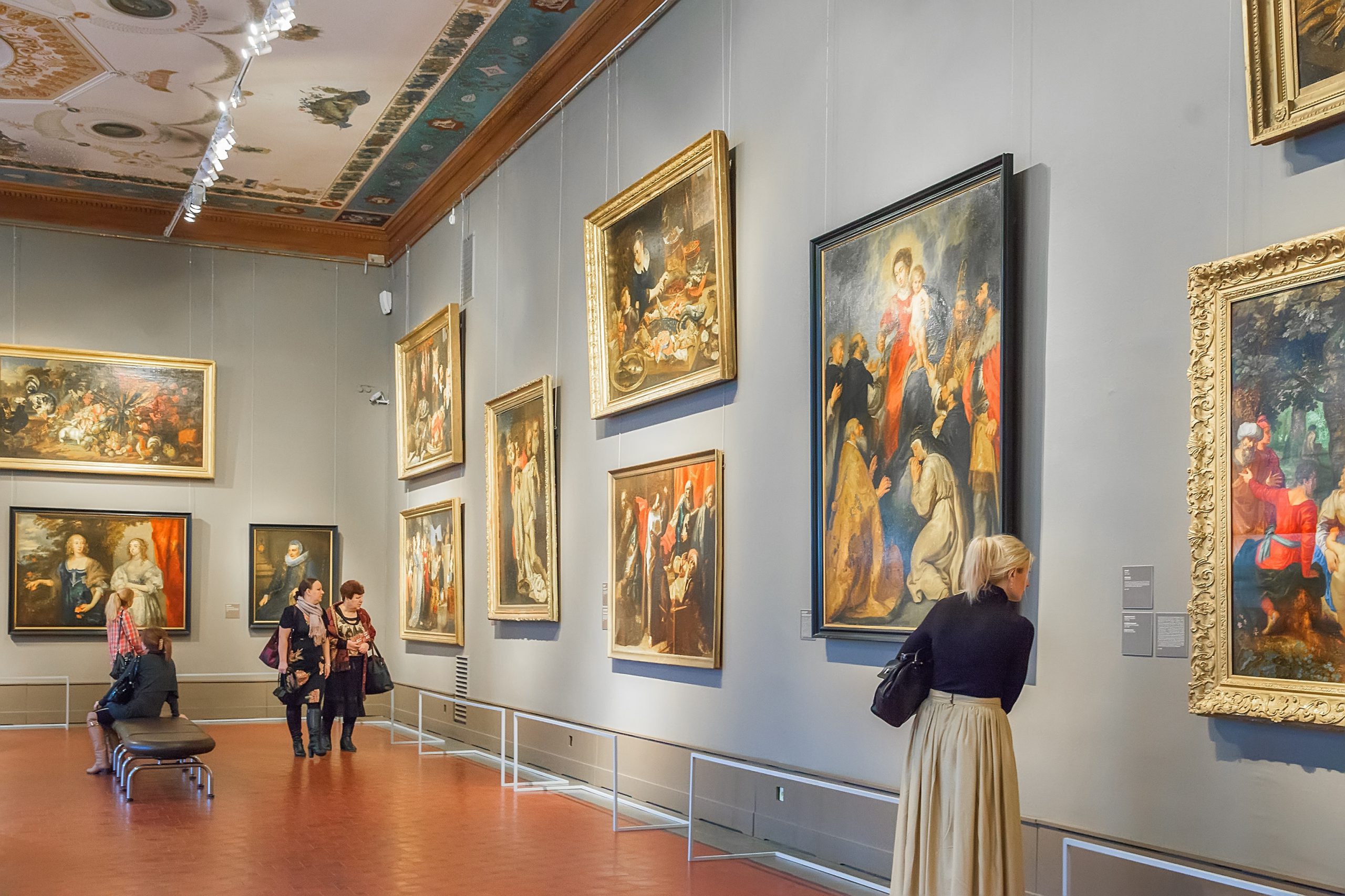
Among my communities, women can predict the future. Aunties know when someone is pregnant. Cousins can tell which path to take at a crossroads. Mums dream of what is yet to come, and grandmas hold memories of pasts they never witnessed. This belief in the unseen, this potential to glimpse and reshape the future must be what led to my affinity for science fiction. Sci-fi is the canvas for visions of the future—dystopian, utopian, or fully fried. It foreshadows. It sounds the alarms, exposing the technological advancements, societal changes, and ethical dilemmas we must grapple with. The genre is so accurate, we could stack its receipts up into the stratosphere. And if we pay attention, we might dodge the next series of catastrophes (because if you read sci-fi, you can see the signs).
In our current climate, science fiction is a matter of survival. Politicians and leaders should take the genre to heart. It would prepare them for every type of world-ending scenario. I wrote about this theory in my recent short story, “The Apocalypse Plurality”:
“Katrina P. Parker had decided on a higher standard for her elected officials. She would never again vote for anyone who didn’t read science fiction. Sci-fi fans tended to recognize the ramifications of a global pandemic. They knew to sidestep neo-fascists or poorly instructed AI to avoid dystopian futures … when it came to world-enders, science-fiction fans were well-versed in the full range of scenarios. They could easily avert apocalypses. Plural.” *
I am Katrina P. Parker. She is me. And perhaps, you should be her too. Look around our world today—from the pandemics to the return of fascism; the mounting concerns about AI, and colonialism masquerading as religion; from the erosion of women’s rights to cataclysmic climate change. The urgency of the situation should shake us to our souls, yet it also demands that we be compassionate enough to act for the shared good. Otherwise, the great minds of sci-fi have already prophesized our doom.
Unsurprisingly, women creators have contributed significantly to the genre, offering shattering visions of the probabilities of our demise. These stories, often dismissed as fanciful, have proven to be astute indicators of societal shifts and technological advancements. Let’s explore the perilous predictions from the women of science fiction and why their voices are crucial in understanding the trajectory of our world. From me to you (with love): we ignore them at our collective risk.

PART ONE: WOMEN’S AUTONOMY
The Handmaid’s Tale by Margaret Atwood, the nightmarish novel adapted into a film and a critically acclaimed Hulu series, has become a cultural touchstone for its portrayal of women under subjugation. The creative minds behind the adaptations depict the country of Gilead and its totalitarian regime in shocking resonance. With historical echoes of the Salem Witch Trials and other real policies like Romania’s Decree 770 or Australia’s Aboriginal Protection Act of 1869, Handmaid’s Tale strikes a chord with contemporary issues. Those narrative choices underscore the invasions of women’s bodies or forced separations and adoptions as grim reminders of history repeating. The series navigates the fragility of individual freedoms—particularly those of women—with unnerving precision. When asked about her hopes for The Handmaid’s Tale today, Atwood said she hopes it doesn’t become a recipe book.
On another hand, Naomi Alderman’s The Power, adapted into a Prime Video series, presents a world where women’s newfound ability to emit electrical shocks becomes a metaphor for the empowerment of the #MeToo movement. The series’ creative team, including producer Naomi de Pear, and director Reed Morano (who also worked on “The Handmaid’s Tale“), examines the complexities of a reversal of power, questioning whether it leads to parity or simply an inversion of power dynamics. Basically, would we trade misogyny for misandry? (Let’s hope not.) In the series, the weaponization of “powers” excises the current fear that, regardless of gender, any form of power is inherently corrupt. The most quoted line from the book ponders the same: “It doesn‘t matter that she shouldn’t, that she never would. What matters is that she could, if she wanted. The power to hurt is a kind of wealth.”
The Power, like THMT, captures the spirit of protests and uprisings, showcasing the collective action of women against oppressive systems. And it doesn’t shy away from depicting the violence and harassment women face. The influence of The Handmaid’s Tale on The Power is a direct line of creative DNA, emphasizing the work isn’t done yet.
Adding to the conversation about the potential loss of autonomy is Jennifer Phang’s “Advantageous” (2015). Co-written with Jacqueline Kim, the film presents a future where the pressure on women to maintain youth and beauty in order to secure opportunities is intensified. “Advantageous” dissects the psychological and societal impacts of these pressures, echoing our current obsession with aesthetics and cosmetic procedures. The story follows the extreme measures a woman goes through to ensure stability for herself and her daughter. “Advantageous” fast-forwards to where the commodification of women’s bodies and the ageism/sexism that pervade our society could end. It adds another layer to women’s rights, highlighting subversive forms of control exerted by imbalanced societal expectations.
Within The Handmaid’s Tale, The Power, and “Advantageous” we are offered a speculative lens to the future. These stories serve as cautionary tales, reminding us to fight for our individual and civil rights, especially when some factions seek to return to tyrannical patriarchy. As society grapples with the vulnerability of human rights, the women behind these narratives provide invaluable insights into the challenges we face and the further hardships we might yet avert.

PART TWO: PLAGUES AND PANDEMICS
Women creators have also foreshadowed real-life plagues and pandemics. Soon to be adapted for the screen, Sarah Pinsker’s A Song for a New Day rings with an eerie warning from September of 2019. This near-future dystopia foresees the silences in our music venues and the emptiness of our public spaces after an outbreak like COVID-19. Pinsker wrote a world where quarantine is commonplace, and technology is a necessary yet inadequate substitute for human touch. The adaptation, to be developed by Jessica Matthews, promises to interrogate corporate overreach and its suffocating grip on creativity and human connection.
In parallel is Emily St. John Mandel’s Station Eleven. This prelude to our current reality became an HBO series that holds a mirror up to the tenuous social structure underpinning our interconnectedness. Mandel’s pandemic-ravaged world is an uncanny twin to lockdown and the upheavals brought on by COVID. In the series, as the world we know collapses, we cling to art, culture, and connection as lifelines, forming a tangible synonym for the nostalgia and longing we feel for pre-pandemic normalcy and the anchor of human connection in our darkest times.
In “Station Eleven”’s third episode, “Hurricane,” written by Shannon Houston and featuring Danielle Deadwyler, we see a clear warning: if we ignore the lessons of past pandemics, we risk watching society crumble. “Hurricane” skillfully builds suspense and explores deep emotions, showing how easily our world could fall into chaos. The episode is an absolute banger and the team of Deadwyler + Houston highlights our capacity to hope and adapt. “Hurricane” is the red flag, reminding us that our complacency in the face of another pandemic could lead to destruction.
A Song for a New Day and Station Eleven are prescient narratives because they lean on the past to inform the future. As we navigate the aftermath of our global crisis, these stories guide us toward resilience, creativity, and the indomitable strength of community. They are not just tales of survival; they are blueprints for the rebirth of society, where despite the silence of the world, the human song might endure.
Then again, I must acknowledge with a touch of irony that the many pandemic portrayals in our media—be it the desolate streets of “The Walking Dead,” the societal unraveling in “Contagion,” or the haunting quiet of “The Last of Us”—may have numbed us to the horrors of airborne diseases. Despite the Influenza Pandemic of 1918, which caused the deaths of an estimated 50 million people, the overabundance of apocalyptic stories might have lulled us into the belief that plagues are the stuff of screenwriters’ imaginations. What should have prepared us may have led to consequences far graver than we anticipated.

PART THREE: POLITICAL RUIN
In the realm of speculative fiction, few authors have captured societal upheaval and the potential for political ruin as incisively as Octavia E. Butler and Ursula K. Le Guin. Their works, particularly Butler’s Xenogenesis series (Lilith’s Brood) and Parable Duology, along with Le Guin’s The Lathe of Heaven, serve as harbingers of a future that seems all too familiar in today’s context. These two intergalactic empresses of science fiction envisioned worlds of chaos and transformation. They also provided a mirror to our present realities, hinting at the aftermath that may follow the political pitfalls of today.
In Butler’s Parable of the Talents, the rhetoric and divisive actions of Andrew Steele Jarret echo contemporary political figures, serving as a reminder of the ruination caused by autocratic politics and oligarchies. The rise of religious extremism, a prevalent theme in the Parable series, becomes even more relevant in the current global landscape, where religious fundamentalism is on the rise. By unmasking the impact of weaponized faith, Butler delivers a chilling forewarning of the consequences of unchecked zealotry. With several adaptations of her deeply prescient narratives on the way—including Lilith’s Brood by Ava DuVernay and Victoria Mahoney—Butler’s work will continue to serve as a blaring siren for sociopolitical issues.
Le Guin’s The Lathe of Heaven, first published in 1971, speaks to the ethical use of power—a theme that resonates in discussions about the responsible use of technology. The story revolves around dreams that alter reality, a metaphor for the power we wield through technology and how it can be misused. Government surveillance and control are key in The Lathe of Heaven, a relatable reference to the privacy issues and the potential for governmental overreach we face today. It also posits how the populace can be manipulated through mental healthcare—a frightening scenario. Both the 1980 and 2002 adaptations of The Lathe of Heaven offer their unique interpretations of Le Guin’s dream-altered universe. The ’80s version stands as a pioneering classic in sci-fi television, while the 2002 version provides a fresh perspective. Each is a testament to the enduring power of Le Guin’s narrative.
Political ruin often sets the stage in sci-fi, as seen in Nnedi Okorafor’s Who Fears Death and Yōko Ogawa’s The Memory Police. Okorafor’s work hurls us into postapocalyptic Africa, where Onyesonwu—a magical heroine—is poised to end the mass annihilation of her people, a narrative steeped in themes of mandated sexual assault and systemic racism. Ogawa’s story, on the other hand, explores a dystopian island where memory and culture are systematically obliterated, a disturbing metaphor for state-sponsored erasure. These works amplify the human and cultural cost of political ruination, serving not just as sci-fi narratives, but as potent reminders of our duty to resist, persist, and remember.
The works of Butler, Le Guin, Okorafor, and Ogawa are both mirror and compass—plotting a course from our current sociopolitical realities while pointing toward more destructive futures. Made more evident by the historical consequences of our actions. As the hints of impending political ruin become clearer, these stories serve as warnings and guides, urging us to consider the trajectory of our behaviors and their fallout. Or perhaps to dream a future into reality where harmony and justice prevail.

PART FOUR: TECHNOLOGICAL TRAGEDY
The 2016 HBO version of “Westworld,” brought to life by co-creator Lisa Joy, expands on our pursuit of artificial intelligence. The series asks, when does AI become conscious and should it be bestowed with “personhood”? Weaving the intricacies of human and AI interaction, “Westworld” raises questions about the ethical implications and the apprehensions surrounding what defines life. As precursors for the AI entities in “Westworld,” Alexa and Siri are becoming integral parts of our daily lives and might one day achieve sentience. If AI thinks for itself, is it a danger to human existence or do they have more to fear from us? Only science fiction knows.
In the film landscape, Akela Cooper’s “M3GAN” is an alarming extrapolation of AI’s potential dangers. The film also aligns with contemporary concerns about the effects of AI advancement. In the intersections of governmental, parasocial, and digital interactions, “M3GAN” voices real-world anxieties, such as the manipulation of social media platforms, the prevalence of disinformation campaigns, and the growing use of technology to influence public opinion. From the potential of AI to shape youthful minds, “M3GAN” captures the broader concerns about the long-term effects of technology on human relationships, and the potential threats to democratic procedures and civil discourse.
Both “Westworld” and “M3GAN” portray our current technological trajectory and the ethical dilemmas we face as AI becomes more integrated into our lives. These works challenge us to consider the future repercussions of AI advancements and the responsibilities of creating increasingly human-like artificial beings. The fact we can’t stop talking about these two techno-tragedies is a testament to Joy and to Cooper, who serve up puzzles of ethics and personhood with doses of spice and sauciness. Their characters make us want to dance, to fight, and to keep them on our side.

PART FIVE: CLIMATE CRISES
The shockwaves of N.K. Jemisin’s The Broken Earth trilogy are undeniable amid our current environmental predicament. Her vivid portrayal of the Stillness, a land plagued by the cataclysmic Fifth Season, not only crafts an epic tale of survival and power but also warns about the ramifications of catastrophic climate change. This volatile and lethal earth serves as an analogy for our society, which is increasingly threatened by the severity and frequency of natural disasters due to our bad decisions. The Broken Earth trilogy is a parable for the global impact of environmental disasters and the inequities they can intensify. Jemisin also uses societal dynamics to expose how certain groups are exploited for the benefit of the powerful, which parallels our gobbling up of nonessential resources in the face of nature’s ruin. In an upcoming film, Jemisin is adapting her books in collaboration with Sony Pictures Entertainment and TriStar Pictures. This deal, involving the author in the process, will allow her to shape the onscreen interpretation of Broken Earth.
Meanwhile, there’s Kass Morgan’s The 100. Adapted for The CW, the series extrapolates the dire consequences of environmental degradation into a postapocalyptic vision of Earth. Centuries after a nuclear cataclysm, the remnants of humanity are forced to confront a ravaged planet, an allegory for the potential uninhabitability of our world after sea levels rise and temperatures soar. The societal collapse and resource scarcity portrayed on the space stations of “The 100” are a grim forecast of a future where climate change has upended food production and water availability. The story also deals with ill-advised human conflicts that ignore existential threats. A commentary on the current politicization surrounding climate facts and science.
The Broken Earth and The 100 predict the ramifications of climate change—uprooting the challenges and the societal transformations that accompany them. When it comes to the cataclysmic decline of nature, survival is as much about overcoming our external environment as it is about rectifying the internal dysfunction of human society.
IN THE END (LET’S HOPE IT’S A HAPPY ONE)
Throughout history, magical women were refuted by accusations of witchcraft. Especially when they foresaw dire futures. From the pages of their speculative fiction grimoires, the women who write sci-fi aren’t spinning idle tales, but mixing potent potions from historic recipes of reality and prophetic imagination. Their tales aren’t fantastical but bitter foreshadowing that we should heed or regret.
Cheers to the seers among us, who with their words are quietly nudging us to take notice and change course. After all, the women of science fiction are rumored to have augmented vision—intermittently updated by nanobots sent back from the future—while we continue to squint at the horizon. And when the next wave of “who could’ve seen this coming” floods our reality, you can call it witchcraft or whatever else you want—just remember they told you so.
* Excerpt from “The Apocalypse Plurality” The Keys: Twisted Tales from Auntie’s Attic (p. 241). Miniver Press




